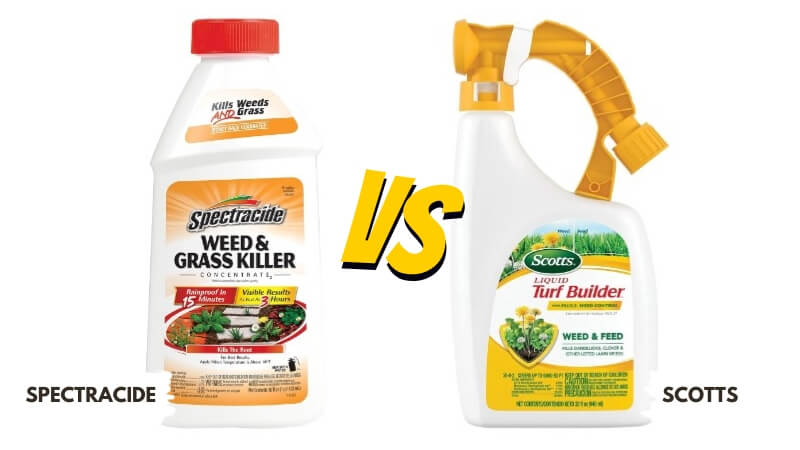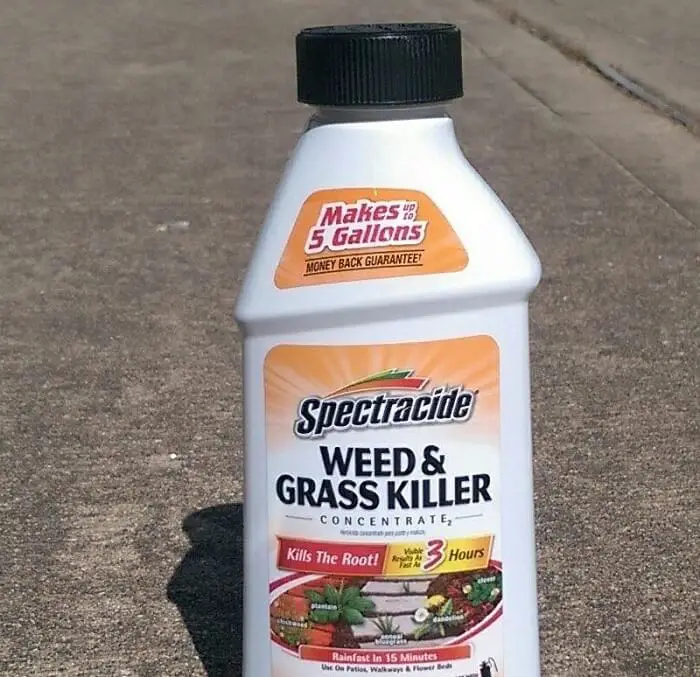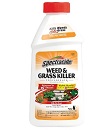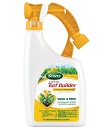Spectracide Vs Scotts Weed Killer
 The main difference between Scotts and Spectracide Weed Killer is that Scotts Liquid Turf Builder is a combination weed and feed product, while Spectracide Weed Stop is a dedicated weed killer.
The main difference between Scotts and Spectracide Weed Killer is that Scotts Liquid Turf Builder is a combination weed and feed product, while Spectracide Weed Stop is a dedicated weed killer.
This means that Scotts Liquid Turf Builder will both kill weeds and fertilize your lawn at the same time, while Spectracide Weed Stop will only kill weeds.
Spectracide Vs Scotts
This table of comparison will allow you to quickly understand the distinctions.
Scotts Liquid Turf Builder with Plus 2 Weed Control is manufactured by Scotts and is a combination of liquid weed killer and fertilizer. It is designed to control common broadleaf weeds while also feeding the lawn.
Spectracide manufactures Spectracide Weed Stop For Lawns Plus Crabgrass Killer Concentrate. It is a concentrate made to kill over 470 types of weeds, including both broadleaf and grassy weeds like crabgrass.

Active Ingredients
Spectracide Weed Stop contains four active ingredients: 2,4-D, Quinclorac, Dicamba, and Sulfentrazone at 3.74%, 1.79%, 0.43%, and 0.22%, respectively.
Scotts Liquid Turf Builder contains three active ingredients: 2.29% 2,4-D Salt, 1.15% MCPP, and 1.13% Dichlorprop-p. The combination in Spectracide targets more weed types.
Weed Control
Scotts Liquid Turf Builder is designed to control common broadleaf weeds like dandelion, clover, and more while fertilizing.
Spectracide Weed Stop controls over 470 types of weeds, including broadleaf and grassy weeds like crabgrass, dandelion, chickweed, and clover. It offers more extensive weed control.
Application Method
Scotts Liquid Turf Builder is a ready-to-spray formula that connects to your garden hose for easy application directly onto the lawn.
Spectracide Weed Stop is a concentrated liquid that must be mixed with water according to the label instructions before applying using a tank sprayer. Scotts is simpler for homeowners to apply.

Coverage
One 32 fl. oz container of Scotts Liquid Turf Builder covers up to 6,000 sq ft for warm season grasses and 4,000 sq ft for cool season grasses.
Spectracide Weed Stop covers up to 5,000 square feet per 32 fl. oz bottle when mixed as directed. The coverage is comparable between the two products.
Turfgrass Types
Scotts Liquid Turf Builder can be used on warm season grasses like Bermuda, Zoysia, Centipede, and Bahia, as well as cool season Bluegrass, Ryegrass, and Fescue.
Spectracide Weed Stop is approved for use on Bluegrass, Ryegrass, Fescue, Zoysia, Bermuda, and Buffalo grass lawns. Both work on a wide variety of turfgrass species.
Repeat Application
Scotts Liquid Turf Builder can require repeat applications in 3-4 weeks for hard-to-control weeds, with a maximum of 2 broadcast applications per year.
Spectracide Weed Stop has a maximum application rate of 13 fl oz per 1,000 sq ft per year, excluding spot treatments. Follow label directions for any required repeat applications.

Rainproof
Scotts Liquid Turf Builder is rainproof after 24 hours. Do not water for 48 hours after application. Spectracide Weed Stop is rainproof after just 3 hours. This allows flexibility in applying both products.
Safety Guide
Carefully follow all label precautions for best results and to avoid lawn damage. Scotts recommends not using it on or around non-grass plants.
Spectracide cautions not to exceed 0.375 lb of Sulfentrazone per acre per year. Both products are safe when applied as directed.
Where to Use
Scotts Liquid Turf Builder with Plus 2 is intended for use on grass lawns only. It should not be used on or around shrubs, trees, or ornamental plantings. Do not use this product on flower or vegetable beds.
Spectracide Weed Killer is intended for use by homeowners on residential lawns. It includes a caution that application to Bermudagrass may cause temporary yellowing or discoloration, but full recovery can be expected.

Mixing Ratio
Scotts Liquid Turf Builder with Plus 2 Weed Control is simple. You must attach the container to a garden hose, turn on the water, and spray. One 32 fl. oz. container of Scotts Liquid Turf Builder with Plus 2 Weed Control provides coverage of 6,000 sq. ft. for warm season lawns and 4,000 sq. ft. for cool-season lawns.
The recommended mixing ratio of Spectracide Weed Killer for spot treatment is 5 oz per gallon of water, and for broadcast treatment, it is 6.4 oz per gallon of water. The maximum seasonal rate is 13 fl oz of product per 1,000 sq ft, excluding spot treatments.
Additional Notes
Scotts Liquid Turf Builder recommends waiting 48 hours before watering after application. Spectracide Weed Stop provides visible results in at least 5 hours when applied in sunny, warm conditions.
Our Observation
After comparing the key features and specifications of Spectracide Weed Stop and Scotts Liquid Turf Builder weed control products, our observation is that Spectracide offers more comprehensive weed-killing power with its 4-way combination of active ingredients.
It targets a broader spectrum of weed types, including stubborn grassy invaders like crabgrass. Scotts is more selective, best for common broadleaf weeds, and combines weed killing with fertilization.
Spectracide requires mixing and sprayer application, while Scotts is premixed and attaches to your hose for easy application. Consider your specific weed problems, lawn type, and application preference when choosing between these effective options.

James E. Butkovich, Pest control maven with a knack for eco-friendly & Chemical solutions. Blogger with a mission to make homes pest-free, one post at a time.

